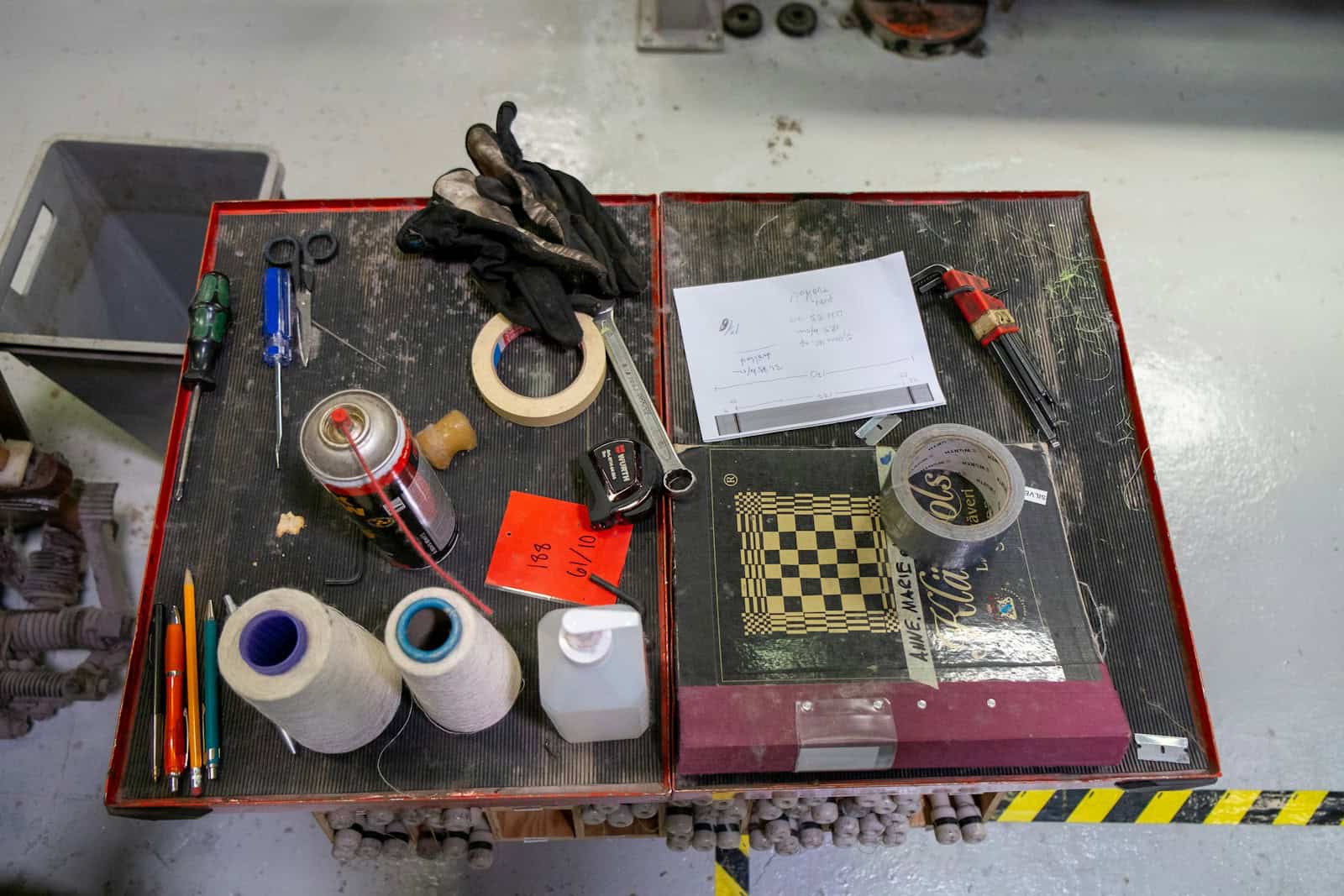Introduction: Beyond Equipment Lists
From “What” to “How”
Many resources give you a basic list of material handling equipment. They explain what a conveyor is. But they don’t tell you how it actually works on a mechanical or logical level.
This article takes a different approach. We won’t just list tools. We’ll break them down piece by piece.
Our goal is simple: provide a detailed technical analysis of the core principles that make any material handling system work. We’re talking about physics, engineering, and software logic. These are the forces that determine whether a system runs efficiently or falls apart.
This is about the applied engineering discipline that powers every warehouse, distribution center, and manufacturing plant.
Why This Matters
Understanding the technical side changes everything. You go from being someone who uses a system to someone who masters it. The benefits are real and immediate.
First, you make better decisions. You can pick the right technology by analyzing engineering trade-offs. You won’t have to rely only on what suppliers tell you in their marketing materials.
Second, you troubleshoot more effectively. When something breaks, you can find the real cause. Maybe it’s a mechanical misalignment. Maybe it’s a sensor failure. Maybe it’s a software problem. You’ll know the difference.
Third, you optimize for real results. You can spot genuine bottlenecks by analyzing system dynamics, throughput calculations, and flow logic. No more guessing.
When you understand these principles, you can design, manage, and improve systems that deliver measurable performance.
Foundational Principles: Physics and Flow
The Physics of Moving
Material handling is applied physics at its core. Every piece of equipment follows the same basic laws. This applies whether you’re looking at a simple cart or a complex robotic system.
Force, Work, and Power are your primary metrics. Moving a 100kg load 10 meters requires a specific amount of work. The formula is simple: Work = Force x Distance. If you want to do it in 10 seconds instead of 20 seconds, you need twice the power. These calculations matter when you’re sizing motors and analyzing energy consumption.
Friction and gravity are always in play. Friction is a force you have to overcome. It affects how much power you need for belt conveyors. It determines the torque required for robotic joints.
Gravity works both ways. It fights against a lift truck mast. But it’s free power for a gravity-fed roller conveyor or a spiral chute.
Kinematics and dynamics control automated systems. The velocity, acceleration, and deceleration of an AGV or sortation diverter directly impact throughput and safety. Sharp, sudden movements increase wear and can damage products. Smooth, controlled motion gives you both speed and stability.
The Logic of Movement
Efficient handling isn’t just about moving items. It’s about moving the right item to the right place at the right time. All within a structured flow.
This logic shapes the physical layout and technical requirements of your facility.
Key flow strategies start with First-In, First-Out (FIFO). This principle is essential for perishable goods or items with expiration dates. To make it work technically, you need systems like pallet flow racks. New loads push older loads forward. Or you need specific software logic in an AS/RS.
The opposite approach is Last-In, First-Out (LIFO). This strategy maximizes storage density. It works well for non-perishable, uniform goods. You implement it through systems like push-back racking or drive-in racks. The last pallet you place is the first one you can access.
Just-in-Time (JIT) is the most demanding flow strategy. It aims to minimize inventory by delivering materials exactly when needed. This puts extreme technical demands on your system. You need perfect reliability, instant responsiveness, and real-time data communication. One system failure can shut down an entire production line.
Ergonomics as Engineering
Don’t think of ergonomics as a “soft” topic. It’s a critical engineering discipline focused on optimizing how humans and machines work together.
Poor ergonomic design in material handling is a leading cause of workplace injury. The U.S. Bureau of Labor Statistics shows that musculoskeletal disorders (MSDs) consistently account for a significant portion of all nonfatal injuries requiring days away from work. These often result from repetitive lifting and awkward postures.
From a technical standpoint, ergonomic solutions minimize the forces and awkward movements required by operators. This includes equipment like vacuum lifters, adjustable-height workstations, and “goods-to-person” automation.
The return on investment isn’t just about safety. OSHA notes that effective ergonomic programs can lead to significant productivity gains and reductions in employee turnover. This directly impacts operational efficiency.
Comparing Flow Principles
The flow principle you choose has direct consequences. It affects the equipment you need, your facility layout, and operational complexity. Understanding these trade-offs is fundamental to system design.
Table 1: Technical Comparison of Material Flow Principles
Principle | Technical Implementation Example | Key Advantage | Major Technical Challenge |
FIFO | Gravity Flow Racks, Pallet Flow Systems | Ensures stock rotation, ideal for perishables. | Higher initial cost, requires specific aisle configuration. |
LIFO | Push-Back Racking, Drive-In Racks | Maximizes storage density. | “Honeycombing” (unused space), difficult to access specific pallets. |
JIT | Kanban-triggered AMRs, direct-to-line conveyance | Minimizes inventory holding costs. | Extremely low tolerance for system downtime or supply chain disruption. |
Technical Analysis of Core Equipment
Conveyance Systems
Conveyors are the arteries of a facility. Their technical design determines flow capacity and reliability. A surface-level understanding won’t cut it for proper application.
A belt conveyor operates on friction. A drive pulley, typically powered by an AC motor, moves a continuous belt. The belt drags items along. This makes it ideal for irregularly shaped products, inclines, and bulk materials. Critical design parameters include belt material, tensioning mechanism, and pulley lagging to ensure sufficient grip.
A roller conveyor uses a different approach. It uses a series of tubes to move flat-bottomed items like totes and cases. In a gravity configuration, it requires a precise angle of decline. In powered versions, the drive mechanism is key. Lineshaft conveyors use a rotating shaft and O-rings to power rollers. Motorized Roller (MDR) conveyors embed a 24V DC motor inside each roller. This creates modular, controllable zones.
Sortation systems are specialized conveyance designed for high-speed routing. A shoe sorter uses a series of “shoes” that slide across the conveyor bed. They gently push packages onto takeaway lines. The technical challenge lies in the control system. It must track each package via photo-eyes, calculate the precise moment to activate the divert, and execute the mechanical action within milliseconds.
Autonomous Mobility
The evolution from AGVs to AMRs isn’t just an upgrade. It’s a fundamental technological leap in autonomy and intelligence.
Automated Guided Vehicles (AGVs) are mature technology that follows fixed paths. Guidance comes from tracking infrastructure. This might be magnetic tape on the floor, reflective targets for laser navigation, or embedded wires. Their control logic is relatively simple: follow the path and stop for obstructions. This makes them reliable and predictable but inflexible. Any route change requires physical changes to the facility.
Autonomous Mobile Robots (AMRs) navigate dynamically. They represent a significant shift from simple automation to true robotics.
The core technology is SLAM (Simultaneous Localization and Mapping). Using sensors like LiDAR, an AMR builds a digital map of the facility. At the same time, it determines its own position within that map. Onboard AI then uses this map to calculate the most efficient path to a destination. It dynamically maneuvers around unexpected obstacles like a misplaced pallet or a person. This eliminates the need for fixed infrastructure and provides immense operational flexibility.
Automated Storage & Retrieval
AS/RS technology tackles the challenge of storage density and retrieval speed through vertical engineering.
Crane-based, unit-load AS/RS are designed for pallet handling. A tall mast travels down a narrow aisle. A crane moves vertically and a shuttle mechanism handles the pallet. The engineering balances speed, stability, and capacity. Cycle times directly depend on the crane’s horizontal travel speed, vertical lift speed, and the shuttle’s extension/retraction time. The structural engineering of the mast and racking is critical, especially in seismically active zones.
Shuttle-based, goods-to-person systems offer a different technical approach focused on throughput. Here, vertical and horizontal movement tasks are separated. A series of lifts moves totes vertically. Autonomous shuttles travel independently on each level of the racking to retrieve and deposit them. This allows for parallel processing. Multiple shuttles can work on different orders simultaneously. This dramatically increases the number of cycles per hour compared to a single crane.
Conveyor Technology Comparison
Selecting the right conveyor requires analyzing specifications beyond simple cost. The drive mechanism, load capacity, and control requirements are critical engineering considerations. They determine whether a system is suitable for a given application.
Table 2: Technical Specification Comparison for Conveyor Systems
Conveyor Type | Drive Mechanism | Typical Load Capacity (kg/m) | Speed Range (m/min) | Key Technical Consideration |
Belt Conveyor | Friction drive (head/tail pulley) | 10 – 100 kg/m | 10 – 60 m/min | Belt tracking and tensioning are critical for reliability. |
Lineshaft Roller | O-rings from a spinning shaft | 15 – 50 kg/m | 15 – 45 m/min | Power transmission diminishes over long distances. |
Motorized Roller (MDR) | Internal 24V DC motor in each roller | 25 – 250 kg/roller | 5 – 75 m/min | Zone control logic (ZPA) is essential for function and efficiency. |
Chain Conveyor | Direct chain and sprocket drive | 500 – 2000+ kg | 5 – 20 m/min | Requires robust frame; lubrication and chain tension are key maintenance points. |
The Brains: Control Systems & Software
Hardware provides the muscle. But software and control systems provide the intelligence. Understanding this hierarchy is essential to understanding a modern automated facility.
The Software Hierarchy
A multi-tiered software stack governs the flow of information and material. Each layer has a distinct role and scope of decision-making.
The Warehouse Management System (WMS) is the strategic brain. It sits at the top of the hierarchy. It manages enterprise-level data like inventory records, receiving information, and customer orders. The WMS makes high-level decisions. It issues commands like, “Allocate SKU 123 to Order 456” or “Direct pallet 789 to a reserve storage location.” It doesn’t directly control hardware.
The Warehouse Control System (WCS) acts as the operational director. Think of it as an air traffic controller. It’s the real-time bridge between the WMS and the machinery. The WCS takes strategic commands from the WMS and translates them into tactical, actionable tasks for the equipment. For example, it breaks down the “move pallet 789” command into a sequence: “Activate conveyor segment 1A, raise pallet stop, track pallet past sensor B, and divert to spur C.”
Programmable Logic Controllers (PLCs) are the equipment-level muscle. These are ruggedized industrial computers that execute the low-level logic sent from the WCS. A PLC is directly wired to the motors, sensors, and actuators of the equipment. Its programming consists of simple but rapid instructions like, “If photo-eye S1 is blocked and S2 is clear, then start motor M3.”
The Logic of Automation
The flow of information is as critical as the flow of goods. A typical order fulfillment process illustrates this data cascade: WMS -> WCS -> PLC -> Equipment.
The WMS sends an order to the WCS. The WCS determines where the required inventory is located. It directs an AS/RS to retrieve a specific tote.
The WCS sends a command to the AS/RS’s PLC. The PLC executes the crane or shuttle movement.
To ensure process integrity, these systems rely on “handshakes.” After the PLC completes a task (like delivering the tote to a conveyor), it sends a “task complete” signal back to the WCS. The WCS then initiates the next step, such as activating the conveyor. This confirmation loop prevents errors and ensures the system knows the precise state of every task.
Data and Protocols
These different systems must speak a common language. Communication typically happens over industrial Ethernet using protocols like TCP/IP.
The data exchange itself is often governed by standards like OPC-UA (Open Platform Communications Unified Architecture). Sometimes it uses proprietary Application Programming Interfaces (APIs).
Protocol incompatibility is a major technical challenge during system integration projects. Ensuring the WMS, WCS, and various equipment controllers can all communicate seamlessly is critical. It’s often an underestimated aspect of system design.
Software Hierarchy Table
Clarifying the distinct roles of each software tier is crucial. It helps you understand how an automated facility functions as a single, cohesive system.
Table 3: The Material Handling Software Hierarchy
System Tier | Primary Function | Decision Scope | Example Task |
WMS | Inventory & Order Management | Strategic (What & When) | “Allocate 10 units of SKU 123 to Order #567.” |
WCS | Real-time System Coordination | Tactical (How & Where) | “Route tote for Order #567 to packing station 4 via conveyor C-12.” |
PLC | Direct Equipment Control | Execution (Do it now) | “Start motor M-101 until sensor S-202 is activated.” |
Conclusion: Systemic Excellence
A Synthesis of Systems
We’ve moved beyond a simple list of equipment. We’ve analyzed the engineering principles that define efficient material handling.
Optimal performance doesn’t come from a single piece of hardware. It’s an emergent property that arises from the synthesis of well-chosen physical systems and intelligent software that controls them. The physical systems must be designed with an understanding of force, flow, and ergonomics.
A high-speed sorter is useless if the WCS can’t feed it information fast enough. An advanced AMR is inefficient if the facility’s flow logic creates constant traffic jams. Excellence lies in the integration.
The Future is Integrated
The principles discussed here are the foundation for the next frontier of material handling.
Trends like AI-driven optimization, digital twin simulation, and predictive maintenance all rely on deep, technical understanding of the underlying systems. To predict a motor failure, you must first understand its operational parameters. To simulate a warehouse, you must first model its physical and logical constraints.
Your Path to Expertise
This analysis provides a framework for deeper inquiry. The path to expertise is through active observation and critical thinking.
When you’re in a facility, don’t just see a conveyor. Identify its drive mechanism and question why that type was chosen. Observe a storage area and try to figure out the flow logic. Is it FIFO, LIFO, or something else? Watch an automated system and try to visualize the handshakes happening between the controller and the hardware.
By applying these technical principles, you transform from a passive observer into an active analyst. You become capable of driving true engineering efficiency.









